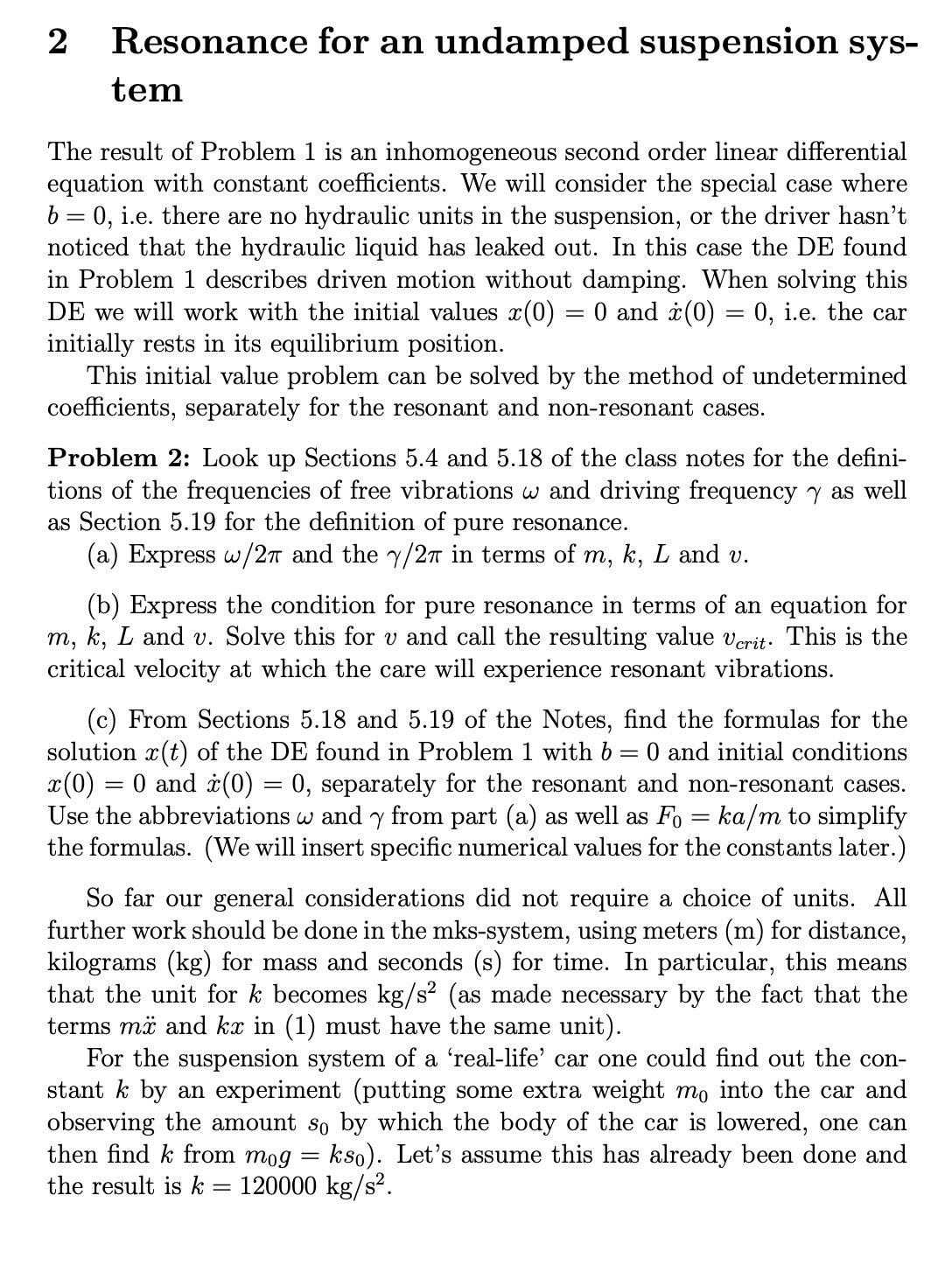2 Resonance for an undamped suspension sys- tem The result of Problem 1 is an inhomogeneous second order linear differential equation with constant coefficients. We will consider the special case where b = 0, i.e. there are no hydraulic units in the suspension, or the driver hasn't noticed that the hydraulic liquid has leaked out. In this case the DE found in Problem 1 describes driven motion without damping. When solving this DE we will work with the initial values x(0) = 0 and x(0) = 0, i.e. the car initially rests in its equilibrium position. This initial value problem can be solved by the method of undetermined coefficients, separately for the resonant and non-resonant cases. Problem 2: Look up Sections 5.4 and 5.18 of the class notes for the defini- tions of the frequencies of free vibrations w and driving frequency y as well as Section 5.19 for the definition of pure resonance. (a) Express w/27 and the y/27 in terms of m, k, L and v. (b) Express the condition for pure resonance in terms of an equation for m, k, L and v. Solve this for v and call the resulting value Vcrit. This is the critical velocity at which the care will experience resonant vibrations. (c) From Sections 5.18 and 5.19 of the Notes, find the formulas for the solution x(t) of the DE found in Problem 1 with b = 0 and initial conditions x(0) = 0 and i(0) = 0, separately for the resonant and non-resonant cases. Use the abbreviations w and y from part (a) as well as Fo = ka/m to simplify the formulas. (We will insert specific numerical values for the constants later.) So far our general considerations did not require a choice of units. All further work should be done in the mks-system, using meters (m) for distance, kilograms (kg) for mass and seconds (s) for time. In particular, this means that the unit for k becomes kg/s (as made necessary by the fact that the terms mix and kx in (1) must have the same unit). For the suspension system of a 'real-life' car one could find out the con- stant k by an experiment (putting some extra weight mo into the car and observing the amount so by which the body of the car is lowered, one can then find k from mog = so). Let's assume this has already been done and the result is k = 120000 kg/s2







